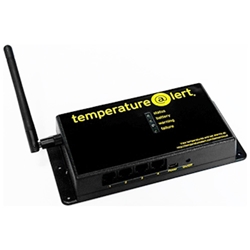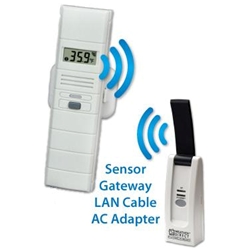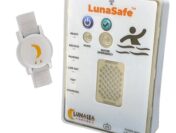Do you have family or pets that you want to protect against dangerously high temperatures during the warm summer months? What you need is a temperature alarm, a device that lets you monitor the temperature in your house, apartment, RV or boat from anywhere when you’re at work, school or away on vacation.
Ways to Use a Temperature Alarm
Soaring summer temperatures can pose a serious health risk to people and pets and also do damage in your home, but with a temperature alarm in place, you’ll get an immediate alert on your phone or mobile device when the temperature begins to climb. There are several types of temperature alarms (also called “heat alarms” or “freeze alarms”) and different ways that they communicate, including by WiFi, cellular or landline phone connections. Here are 5 ways you can use a temperature alarm to protect your loved ones and home from dangerous summer heat and a recommended temperature alarm model for each scenario.
1. Safety Net for Seniors
Summer heat can quickly become a health hazard for seniors over age 65 because their bodies can’t adjust to changes in air temperature especially heat as quickly as when they were younger. Put a temperature alarm in the home of senior family members and program it to sent you a notification if the temperature in their home or apartment exceeds a healthy threshold.
Recommendation: WisDom Wireless TempAlert Emergency Dialer Kit that calls up to four phone numbers and uses a landline phone connection.
2. Traveling with Pets
 Bring a temperature alarm with you when you’re on the road with your pet. If you have to leave them behind in your rental house, RV or boat while you are out exploring, the temperature alarm will send you an alert if the air conditioning fails so you can rescue your furry friend before they succumb to heat stroke.
Bring a temperature alarm with you when you’re on the road with your pet. If you have to leave them behind in your rental house, RV or boat while you are out exploring, the temperature alarm will send you an alert if the air conditioning fails so you can rescue your furry friend before they succumb to heat stroke.
Recommendation: Temperature@lert Cellular Edition because it’s portable, plugs into any outlet and works wherever there is AT&T and T-Mobile wireless service. Works on batteries too.
3. Protect Against Damaging Humidity
In certain parts of the country, high temperatures often brings high humidity that can do serious damage to your home’s floors, furniture and woodwork. As any Floridian can tell you, running the air conditioner is one of the most effective ways to control humidity levels. To ensure that your A/C is running when you’re not there, use a temperature alarm to receive immediate alerts of a power outage or mechanical failure.
Recommendation: MarCELL Cellular Connected Monitoring System, an affordable cellular-based solution for monitoring humidity, temperature and power in your remote home or vacation property. No phone line or Internet connection required.
4. Long Distance Pet Sitting
 Use a temperature alarm to monitor pets left home alone while you travel, including temperature-sensitive pets like fish, snakes and turtles that live in an aquarium or vivarium. Your temperature alarm will notify you if their environment changes and the temperature begins to rise or fall.
Use a temperature alarm to monitor pets left home alone while you travel, including temperature-sensitive pets like fish, snakes and turtles that live in an aquarium or vivarium. Your temperature alarm will notify you if their environment changes and the temperature begins to rise or fall.
Recommendation: La Crosse Online Temperature and Humidity Wireless Alert System that monitors the environmental conditions in a pet’s tank and sends e-mail or text message alerts if there’s a problem.
5. Greenhouse Monitoring
Whether you’re running a large commercial growing operation or have a small backyard greenhouse, keeping your plants alive and healthy requires the best possible growing environment. Use a temperature alarm to receive alerts if the temperature gets too warm. Most temperature alarms also allow to you to call in to get the current temperature.
Recommendation: Metropolitan Industries Ion Cellular Gateway tells you the exact temperature when it sends an alert message and is the perfect solution for remote locations lacking an Internet or landline connection.
More on Temperature Alarms
A temperature alarm is a reliable way to remotely monitor temperature in your primary residence or unoccupied vacation home or the home of a loved one. Use one in your RV or boat as well. A temperature alarm is a great way to receive immediate alerts if the summer temperatures exceed an acceptable level so you can protect family and pets before they suffer from the effects of oppressive heat.
Most temperature alarms are multi-functional can be used to do more than just monitor for temperature. For more information on temperature alarms, read the blog article “Versatile Temperature Alarms Protect Homes, Boats and RVs Year-Round.”




